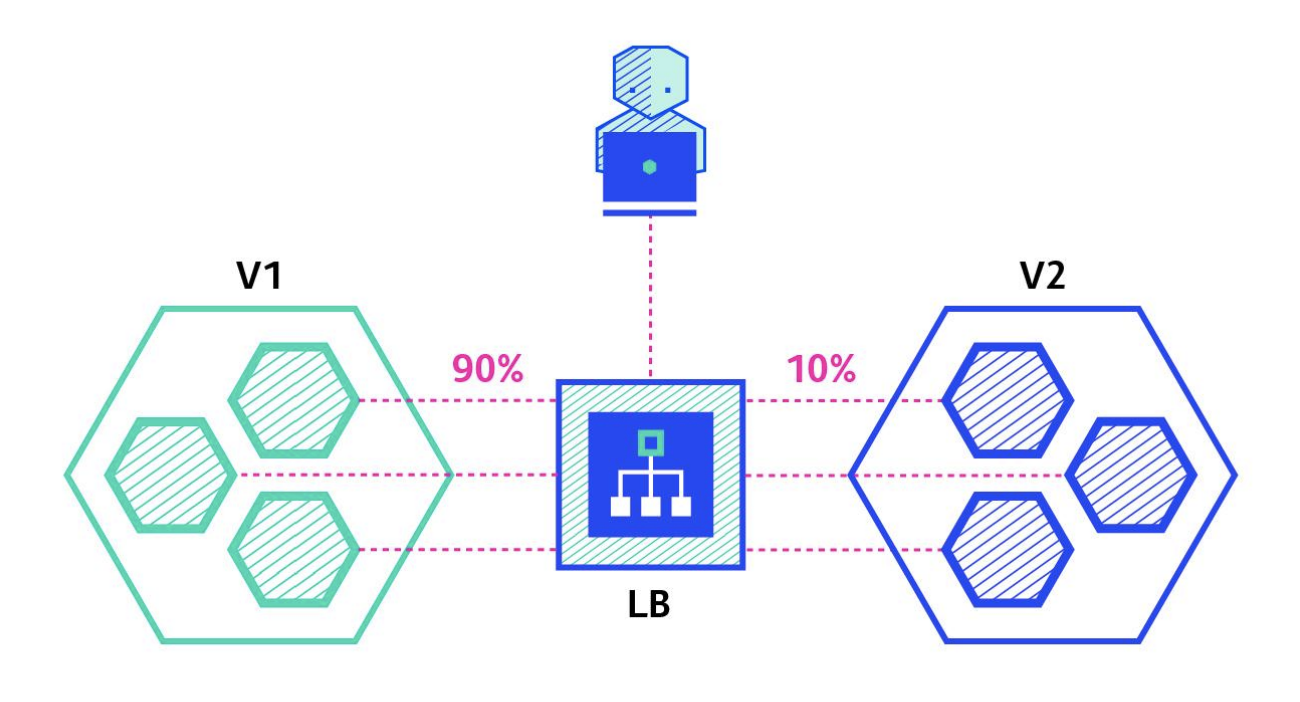What is Canary Deployment and How Does It Work in 2025
Canary deployment is a gradual rollout strategy for releasing a new software version. Instead of deploying updates to all users at once, you release them to a small group first. This approach minimizes risks by allowing you to monitor performance and gather real-time feedback before scaling up. It ensures reliability by identifying potential issues early, reducing the chance of widespread failures.
In 2025, modern software development demands faster and safer deployment methods. Continuous deployment practices and AI-driven DevOps tools have made canary deployment essential. A canary deployment example shows how incremental rollouts provide real-world insights, enabling quick adjustments. This strategy aligns with the need for high availability and cost-effective solutions in today’s fast-paced tech environment.
Key Takeaways
Canary deployment rolls out updates to a small group first. This lowers risks and helps watch for problems in real-time.
Feature flags make canary deployment better by controlling visible features. This lets you make quick changes without redoing everything.
Feedback from canary users finds problems early. This improves user experience and makes updates more reliable.
Tools like Kubernetes make canary deployment easier. They manage traffic, undo changes, and check performance well.
Canary deployment works best for risky updates. It slowly shows updates and keeps things stable while updating often.
What is Canary Deployment?

Definition and Purpose
Canary deployment is a software release strategy that rolls out updates to a small group of users before making them available to everyone. This approach minimizes risks by allowing you to test new features in a controlled environment. The term "canary release" originates from coal mining, where miners used canaries to detect harmful gases. Just as canaries served as an early warning system, canary deployment helps you identify potential issues early, ensuring a safer and more reliable rollout.
The primary goals of canary deployment include:
Collecting data on user behavior to refine new features.
Maintaining high availability to reduce downtime.
Supporting rapid iteration through continuous delivery practices.
This strategy aligns with modern software development needs, where reliability and user experience are top priorities.
Key Characteristics
Canary deployment stands out due to its gradual rollout process. It begins by exposing a small subset of users to the new version while the majority continue using the stable version. This approach allows you to monitor performance and gather real-time feedback. If issues arise, you can address them promptly, minimizing the impact on your user base.
Unlike other deployment strategies, canary deployment encompasses both infrastructure changes and feature releases. It limits exposure to potential problems, ensuring only a small group of users is affected if something goes wrong. This makes it an ideal choice for organizations aiming to balance innovation with risk management.
Canary Deployment Example
Many leading companies use canary deployment to ensure smooth rollouts. For instance:
Netflix gradually introduces new features to a small percentage of users, enabling them to identify and fix issues before a full release.
Amazon employs this strategy across its vast infrastructure to thoroughly test updates before deploying them to all users.
Financial institutions rely on canary deployment to test critical updates in controlled environments, safeguarding their customers' data and experience.
These examples highlight how canary deployment helps organizations deliver reliable updates while maintaining user trust. By adopting this strategy, you can achieve similar results, ensuring both stability and innovation in your software releases.
How Does the Canary Deployment Process Work?
Step-by-Step Process
Preparing the New Version
The canary deployment process begins with careful preparation. You need to plan and create a dedicated canary infrastructure for the new update. This involves defining the canary group, which is a small, representative subset of your users. By selecting this group, you ensure that the new feature or update is tested in real-world conditions without exposing all users to potential risks. Once the infrastructure is ready, you deploy the new version to this group.
Gradual Traffic Distribution
After deploying the update, you gradually distribute user traffic to the canary instance. Initially, only a small percentage of user traffic flows to the new version. This allows you to test new functionality while minimizing the impact on your overall user base. Over time, as confidence in the update grows, you increase the percentage of user traffic directed to the canary version. This step ensures real-user traffic testing under controlled conditions.
Monitoring and Testing
Monitoring plays a critical role in the canary deployment process. You collect performance metrics, user feedback, and error logs from the canary group. Tools like Prometheus and Grafana help you visualize and analyze this data. By closely observing how the new feature performs, you can identify any issues early and make necessary adjustments.
Decision-Making: Rollback or Full Deployment
Based on the data collected, you decide whether to proceed with a full rollout, make adjustments, or roll back the update. If the canary deployment succeeds, you gradually increase the rollout to the rest of your user base. If issues arise, you can revert the update for the canary group without affecting the stable version.
Role of Feature Flags in Canary Deployment
Feature flags enhance the effectiveness of canary deployment by giving you precise control over feature rollouts. They allow you to turn features on or off without redeploying the application. This simplifies rollback procedures, enabling you to isolate problematic features without reverting the entire deployment. Feature flags also support real-time monitoring and feedback, improving deployment stability. By using feature flags, you can test new functionality in real-world conditions while maintaining high deployment frequency.
Tools and Techniques for Traffic Management
Effective traffic management is essential for a successful canary deployment. Several tools and techniques help you control user traffic during the process:
Tool | Description |
|---|---|
Load Balancer | Distributes traffic across servers, deciding what traffic goes to the canary and stable versions. |
Kubernetes | Manages deployments of application containers, commonly used for canary deployments. |
Service Mesh | Provides advanced traffic management capabilities, including traffic splitting between versions. |
DNS Routing | Routes traffic based on DNS records, allowing for flexible control over traffic flow. |
Additionally, monitoring tools like Prometheus, Grafana, and Datadog help you track performance metrics and detect anomalies during the rollout. These tools ensure that your canary deployment process remains smooth and reliable.
Benefits and Drawbacks of Canary Deployment
Benefits
Reduced Risk of Full-Scale Failures
Canary deployment significantly reduces the risk of widespread failures by introducing updates to an early sub-segment of users. This controlled rollout ensures that only a small group experiences the new version initially. If issues arise, you can quickly roll back the changes without affecting the majority of users. This approach provides zero downtime and faster rollback capabilities, minimizing disruptions to your application or service.
Faster Feedback from Real Users
With canary releases, you gain valuable insights from real-world usage. By observing how users interact with the new features, you can identify bugs, performance issues, or unexpected behaviors early. This feedback loop allows you to make adjustments before scaling the update to all users. Additionally, canary deployment supports A/B testing, enabling you to compare user responses to different versions and refine your product accordingly.
Improved User Experience
Progressive delivery through canary deployment ensures a smoother user experience. By gradually rolling out updates, you can address potential issues before they impact a larger audience. This method also builds user confidence in your product's stability. Real-world testing during canary releases helps you deliver a more reliable and polished update, enhancing overall satisfaction.
Drawbacks
Complexity in Implementation
Implementing canary deployment requires sophisticated tools and infrastructure. Managing traffic distribution, monitoring performance, and handling configurations for both canary and stable versions can be challenging. You need robust DevOps pipelines and observability tools to ensure success. Without proper planning, the process can become overwhelming.
Potential for Partial User Impact
Users in the canary group may encounter bugs or performance issues. While this group is small, their experience can still lead to dissatisfaction. Careful monitoring and quick responses are essential to minimize the impact on these users during the controlled rollout.
Resource and Time Requirements
Canary deployment demands careful planning and execution. You need to allocate resources for monitoring, traffic management, and rollback procedures. This approach may also require additional infrastructure to support the canary release environment. While the benefits often outweigh the costs, the time and effort involved can be significant.
Comparing Canary Deployment to Other Strategies
Canary Deployment vs. Blue-Green Deployment
When comparing canary deployment to blue-green deployment, you’ll notice key differences in their processes and outcomes. Blue-green deployment involves maintaining two identical environments: one active (blue) and one idle (green). You deploy the new version to the idle environment and then switch all traffic to it at once. This approach minimizes downtime and allows for quick rollbacks if issues arise. However, it lacks the gradual exposure that canary deployment offers.
In contrast, canary deployment gradually introduces the new version to a small subset of users. This method allows you to monitor performance and gather feedback before scaling up. It provides flexible risk management and real-world testing, making it ideal for high-stakes updates. While blue-green deployment focuses on speed and simplicity, the canary strategy prioritizes safety and user experience.
Tip: Use blue-green deployment for straightforward updates requiring minimal testing. Opt for canary deployment when you need detailed insights and risk mitigation.
Canary Deployment vs. Rolling Deployment
Rolling deployment and canary deployment share similarities but differ in purpose and execution. Rolling deployment updates your application incrementally, replacing old versions with new ones across servers. This deployment pattern ensures continuous updates without downtime. However, it doesn’t isolate a specific user group for testing.
Canary deployment, on the other hand, targets a small user subset first. This approach limits exposure to potential issues, making it a safer choice for testing new features. The table below highlights their differences:
Feature | Canary Deployment | Rolling Deployment |
|---|---|---|
Purpose | Tests new features with a small user group | Incrementally updates small user groups |
Risk Mitigation | Limits exposure by rolling out to a subset | Mitigates risks by updating gradually |
Rollout Strategy | Gradual rollout to a subset before full release | Continuous updates without downtime |
When to Choose Canary Deployment Over Other Strategies
You should choose canary deployment when managing high-risk updates or major feature releases. This strategy works best when user feedback is essential for success. It’s also ideal for scenarios requiring gradual exposure and real-time monitoring to ensure a smooth rollout. For example, if you’re introducing a revenue-critical feature, the canary strategy minimizes risks while maintaining deployment frequency.
By using canary deployment, you gain the ability to test in real-world conditions without compromising the stability of your application. This makes it a preferred choice for teams aiming to balance innovation with reliability.
Implementing Canary Deployment in Modern Environments
Using Kubernetes for Canary Deployment
Kubernetes Features Supporting Canary Deployment
Kubernetes provides several features that make canary deployment effective and efficient. It allows you to gradually shift traffic from the stable version to the new version, enabling real-time performance monitoring. By using rolling updates and traffic splitting, you can control the deployment process with precision. Kubernetes also offers monitoring tools to track metrics like response time and error rates, helping you evaluate the new release's performance.
Additionally, Kubernetes optimizes resource utilization during canary deployments. Its resource management capabilities dynamically adjust resource allocation based on the canary group's needs. The auto-scaling feature ensures that the canary group receives adequate resources for testing, maintaining both performance and scalability.
Tools like Istio, Argo Rollouts, and Feature Flags
Several tools enhance Kubernetes' capabilities for canary deployment. Service meshes like Istio or Linkerd provide advanced traffic management, allowing you to split traffic precisely between canary and stable versions. Argo Rollouts integrates seamlessly with Kubernetes, offering features like automated rollbacks and detailed progress tracking. Feature flags further improve control by enabling you to toggle features on or off without redeploying, ensuring a smooth and flexible rollout process.
Best Practices for Effective Implementation
Setting Clear Metrics for Success
Define measurable success criteria before starting a canary deployment. Metrics like request latency, error rates, and user engagement help you assess the new version's performance. Clear metrics ensure you can make informed decisions about proceeding with or rolling back the deployment.
Automating Rollbacks and Monitoring
Automation is crucial for reducing human error and ensuring consistency. Use automated pipelines to deploy updates and monitor performance. Implement rollback mechanisms to quickly revert to a stable version if issues arise. Robust monitoring tools like Prometheus or Datadog provide real-time insights into system health and user behavior.
Ensuring Team Collaboration
Effective canary deployment requires collaboration across teams. Developers, testers, and operations teams must work together to plan and execute the rollout. Regular communication ensures everyone understands the deployment goals and can respond quickly to any issues.
Common Challenges and How to Overcome Them
Added complexity: Managing additional components during canary deployment can be overwhelming. Prepare your team to handle this complexity with proper training and documentation.
Observability: Lack of visibility into user behavior and system issues can hinder success. Use observability tools to monitor key metrics and detect anomalies.
User experience issues: Canary users may encounter bugs, leading to dissatisfaction. Prioritize user impact assessments and implement fallback strategies to mitigate this risk.
Automation is essential: Manual processes increase the likelihood of errors. Automate delivery pipelines and rollback mechanisms to streamline the deployment process.
Configuration management: Managing configurations for both canary and full deployments can be challenging. Use configuration management tools to simplify this process.
Tip: Always test in production-like environments to ensure accurate assessments of the new version's performance.
Canary deployment offers a reliable way to release software updates by gradually exposing new features to a small user group. This approach minimizes risks and ensures a stable user experience. You can monitor performance, gather feedback, and make informed decisions about scaling or rolling back updates.
Feature flags play a crucial role in enhancing deployment stability. They allow you to control feature visibility, enabling real-time monitoring and quick deactivation of problematic features. This flexibility supports continuous delivery and increases deployment frequency without compromising system reliability.
Looking ahead to 2025, advancements in tools and practices will further refine canary deployment. AI-powered platforms will predict and prevent deployment failures, while GitOps adoption will simplify rollbacks and improve collaboration. Tools like Prometheus, Grafana, and Datadog will enhance monitoring capabilities, ensuring smoother rollouts. These innovations will empower you to achieve safer and more efficient deployments in modern devops environments.
FAQ
What is the main purpose of canary deployment?
Canary deployment helps you release updates gradually. It minimizes risks by testing new features with a small user group before a full rollout. This approach ensures stability and improves user experience.
How does canary deployment differ from blue-green deployment?
Canary deployment rolls out updates to a small group first, while blue-green deployment switches all traffic to a new environment at once. Canary deployment focuses on gradual testing, whereas blue-green prioritizes speed and simplicity.
Why are feature flags essential in canary deployment?
Feature flags let you control feature rollouts without redeploying. They allow you to isolate and disable problematic features quickly. This flexibility ensures stable and frequent deployments, especially in fast-paced devops environments.
What tools can you use for canary deployment?
You can use tools like Kubernetes, Istio, and Argo Rollouts. These tools help manage traffic, automate rollbacks, and monitor performance. They simplify the deployment process and enhance reliability.
When should you choose canary deployment?
You should use canary deployment for high-risk updates or major feature releases. It’s ideal when you need real-world feedback and gradual exposure to ensure a smooth rollout.
See Also
Understanding Canary Deployment Patterns and Their Functionality
Pros and Cons of Blue-Green Deployment Strategies for 2025
Exploring Blue-Green Deployment and Its Importance Today
Current Techniques for Rolling Back Deployments in 2025
Understanding Feature Flag Development and Its Significance in 2025

